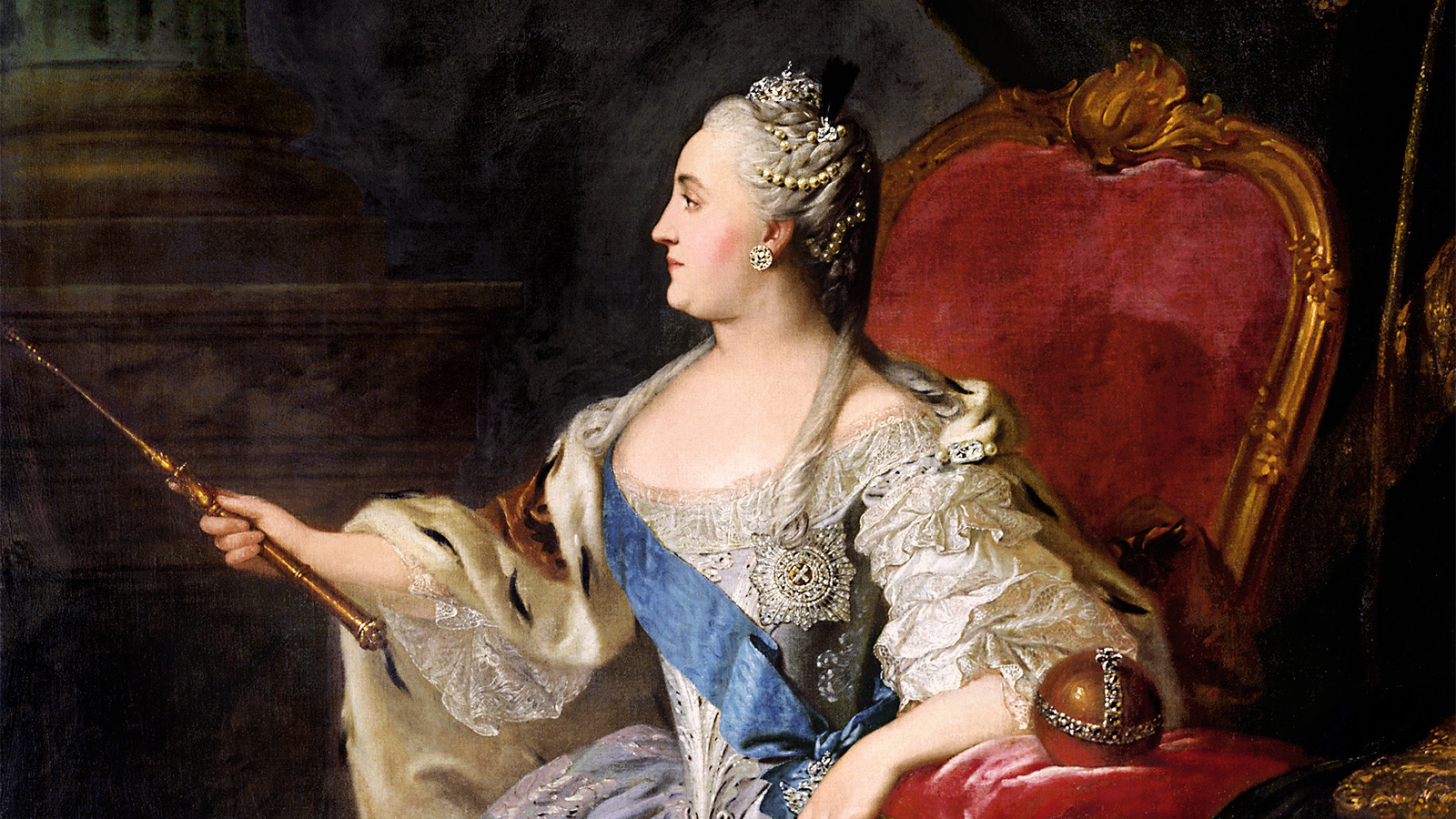Brought up in a petty German court, Catherine found herself transplanted to St. Petersburg as a young girl, living with a husband she detested, and forced to pick her way through the intrigues that flourished in the Russian capital.
Catherine was particularly concerned that Western leaders think well of her and of the condition of Russia under her rule. When Diderot visited Russia in 1773, he reported that Catherine had the soul of Brutus and the charms of Cleopatra. Voltaire stayed out of Russia but accepted Catherine’s bounty, in return for which he called her “the north star” and “the benefactress of Europe.”
Catherine would perhaps have liked to reform conditions in Russia, but as a woman, a foreigner, and a usurper (she owed her throne to a conspiracy that deposed and murdered her husband, Peter III), she could not act upon her inclinations. Depending as she did upon the goodwill of the nobility, she could not interfere with serfdom. She had to reward her supporters with vast grants of state land, inhabited by hundreds of thousands of state peasants, who now became privately owned serfs who could be sold.
Once firmly established on the throne, however, Catherine decided to convoke a commission to codify the laws of Russia, for the first time since 1649. With the help of advisers, Catherine herself spent three years composing the Instruction to the delegates, full of abstract argument drawn from Montesquieu’s Spirit of the Laws and Beccaria’s Crimes and Punishments.
The 564 delegates to the commission were elected by organs of the central government and by every social class in Russia except the serfs. Each delegate was charged to bring with him a collection of written documents from his neighbors presenting their grievances and demands for change.
Each class of representatives was eager to extend the rights of that class: The free peasants wanted to own serfs; the townspeople wanted to own serfs and be the only class allowed to engage in trade; the nobles wanted to engage in trade and have their exclusive right to own serfs confirmed. After 203 sessions of inconclusive debate, lasting over a year and a half, Catherine ended the labors of the commission in 1768. The commission was the last effort by czardom to consult the Russian people as a whole until the early twentieth century.
In 1773 Yemelyan Pugachev (d. 1775) roused the Cossacks to revolt against Catherine’s cancellation of their special privileges. Pretending to be her murdered husband, Czar Peter III, and promising liberty and land to the serfs who joined his forces, Pugachev swept over a wide area of southeastern Russia and marched toward Moscow. Like the disturbances of the seventeenth century, Pugachev’s revolt revealed the existence of bitter discontent in Russia.
Catherine took action. Her reorganization of local government (1775) created fifty provinces where there had been twenty before. She thus replaced a small number of unwieldly units with a larger number of small provinces, each containing roughly 300,000-400,000 inhabitants. While the reform of 1775 gave the nobles the lion’s share of provincial offices, it also subjected them to the close direction of the central government. The revolt was brutally crushed.
In a charter of 1785 the nobles again received exemption from military service and taxation and secured absolute mastery over the fate of their serfs and their estates. A charter to the towns in the same year disclosed Catherine’s sympathy with the tiny but growing urban middle class and established the principle of municipal self-government, although it remained a dead letter because of the rigorous class distinctions maintained in the urban centers of Russia. For the serfs, however, there was no charter.

